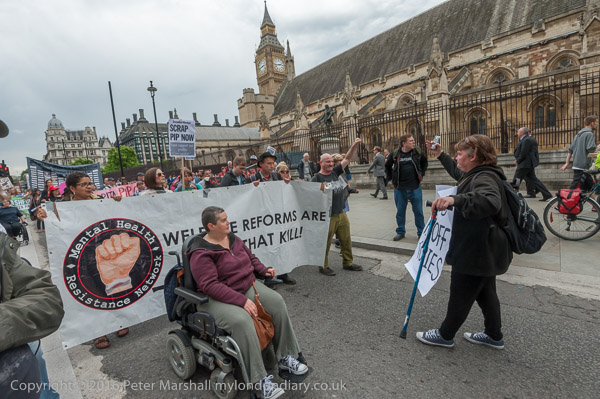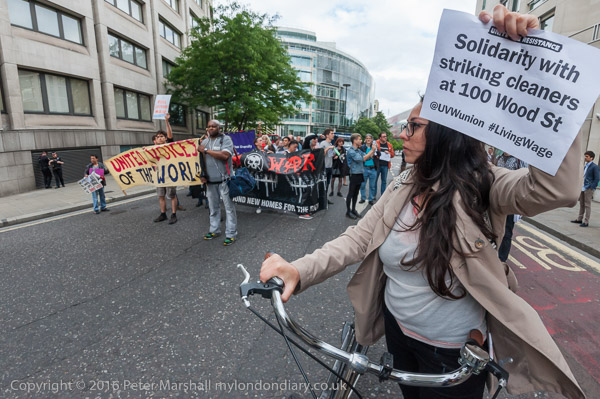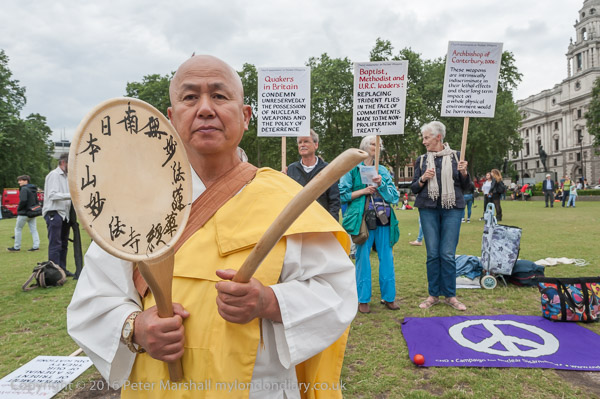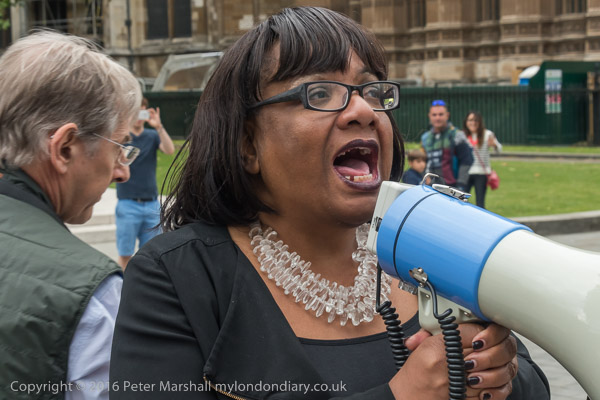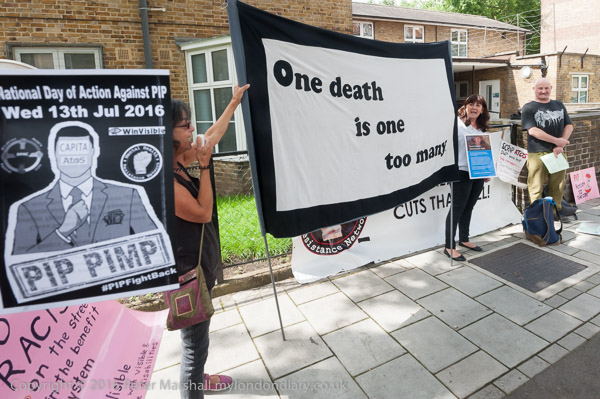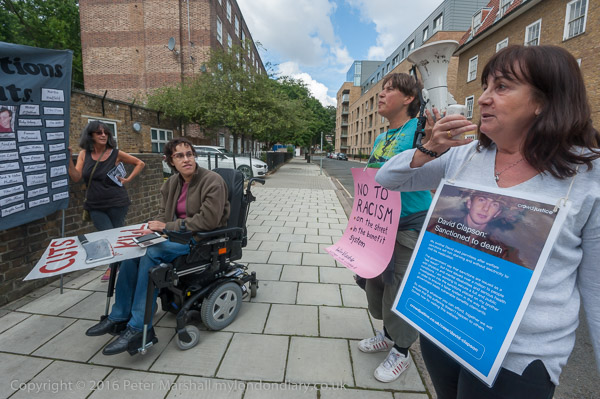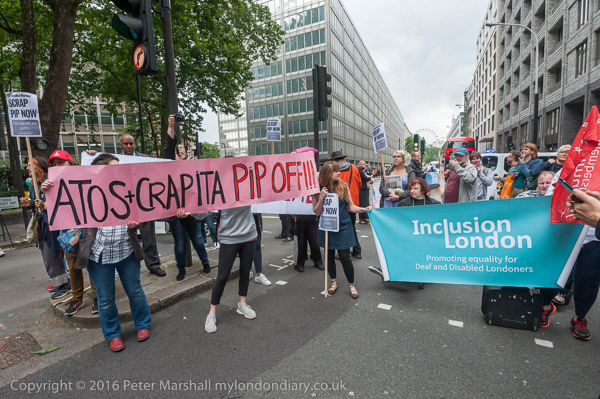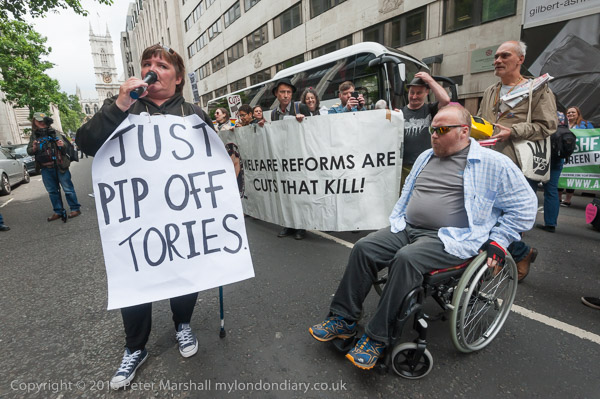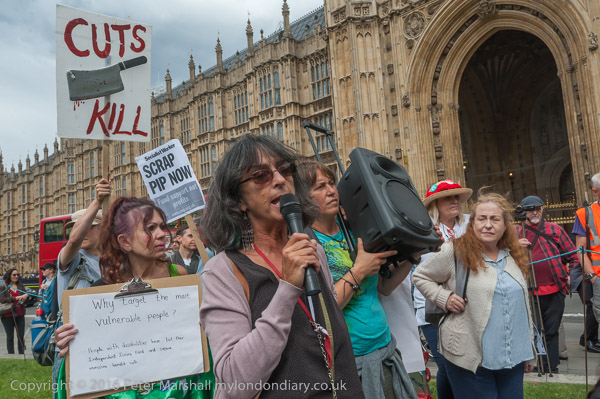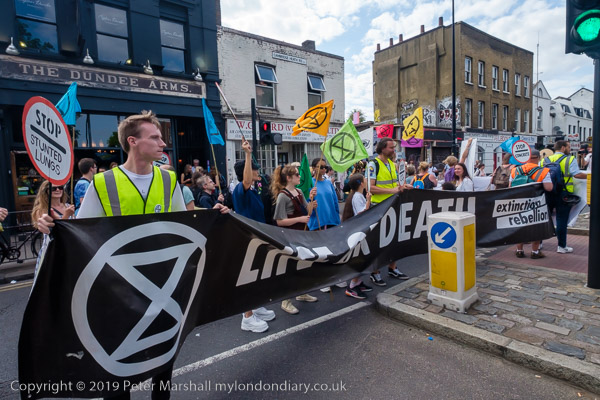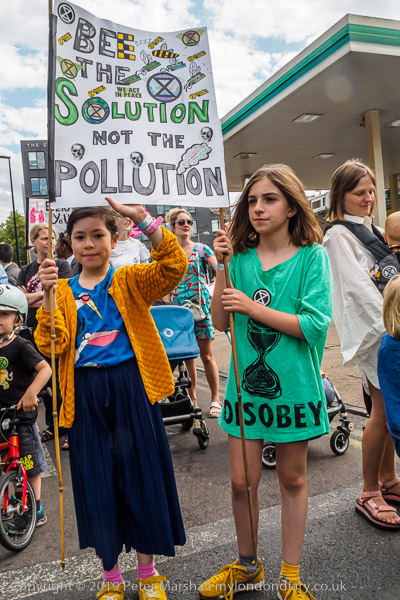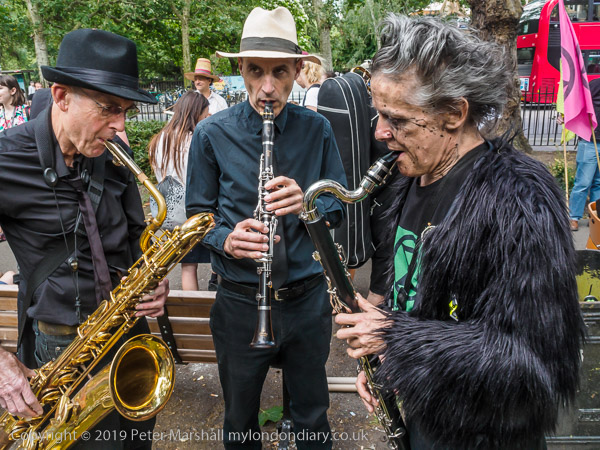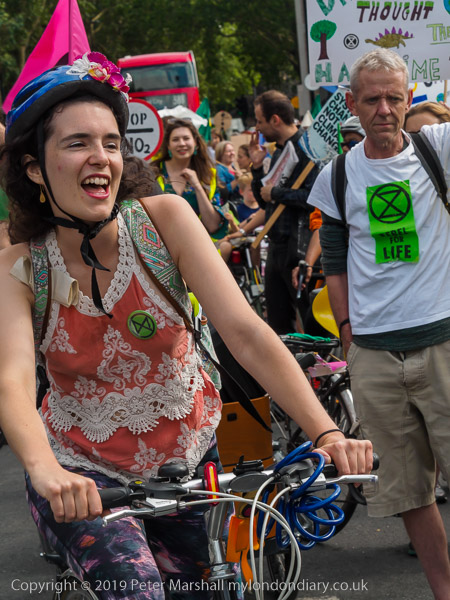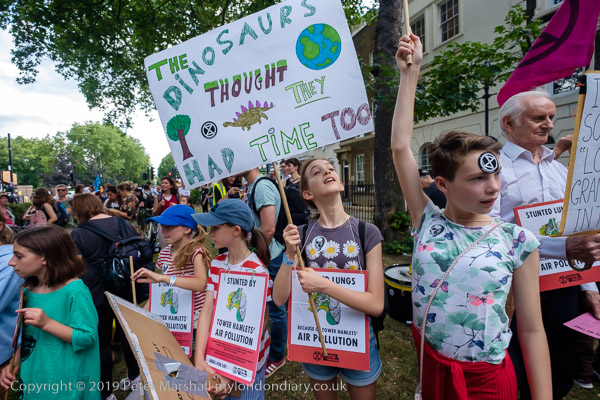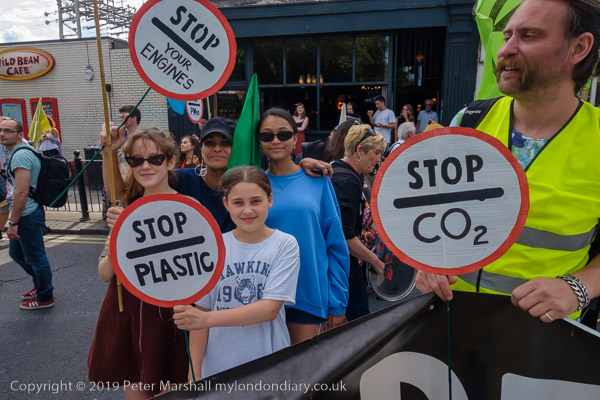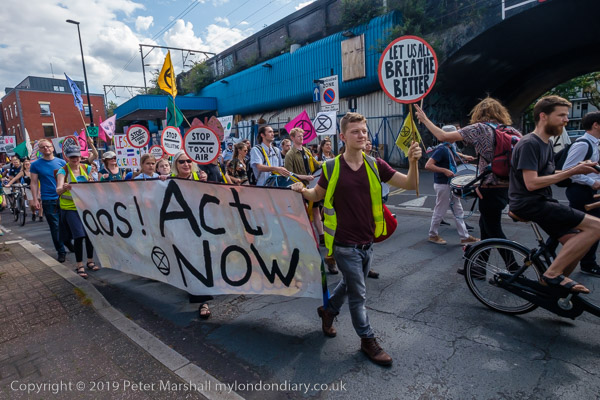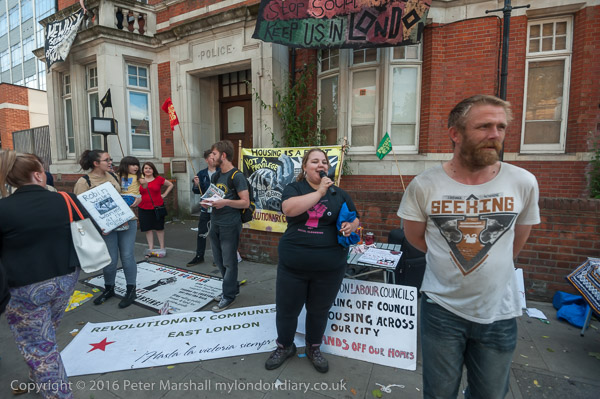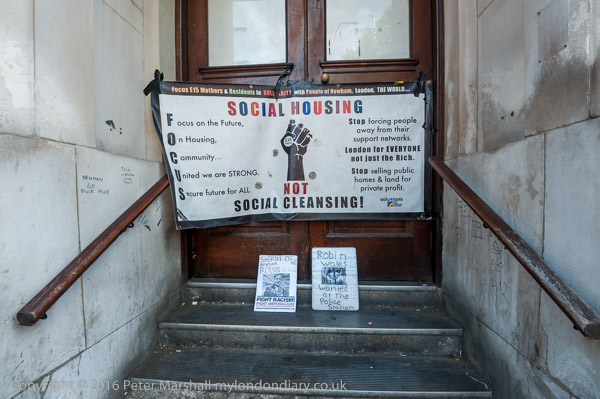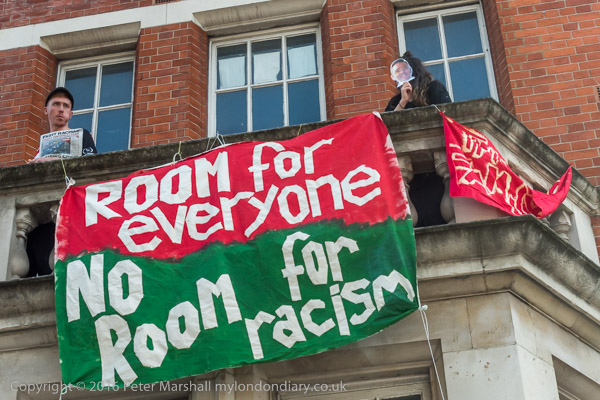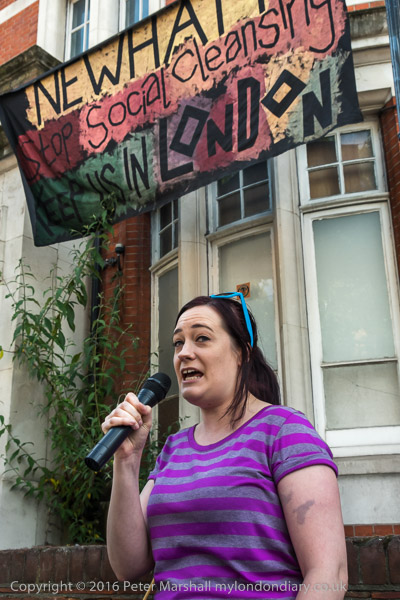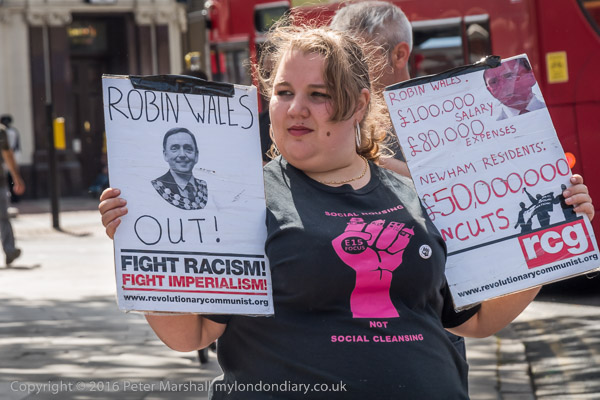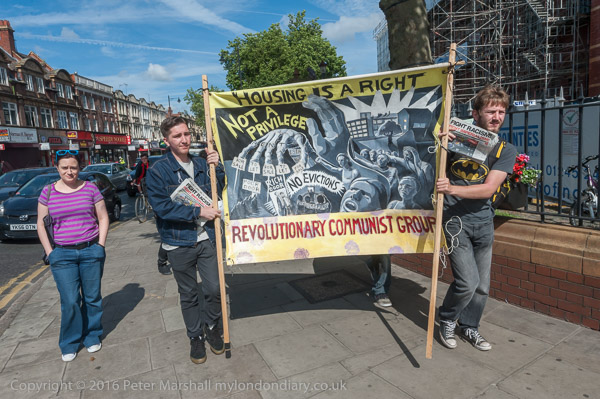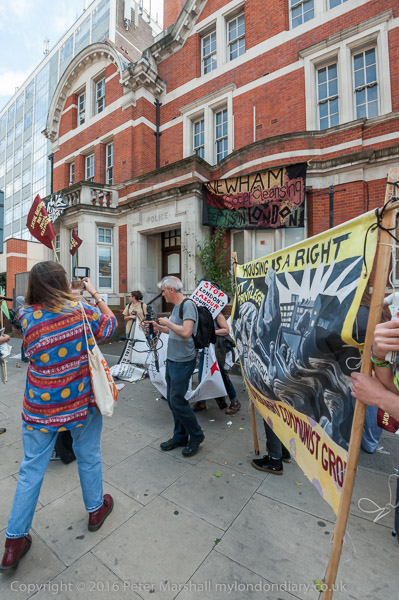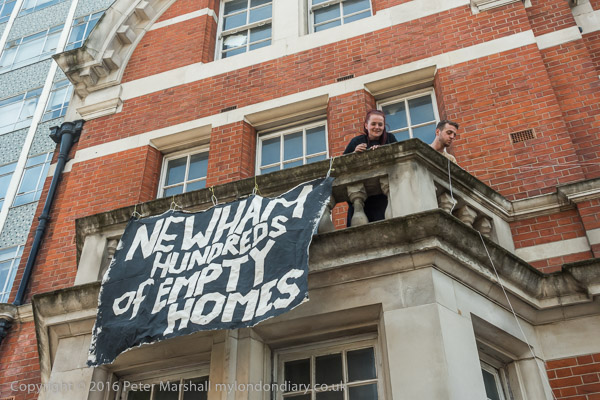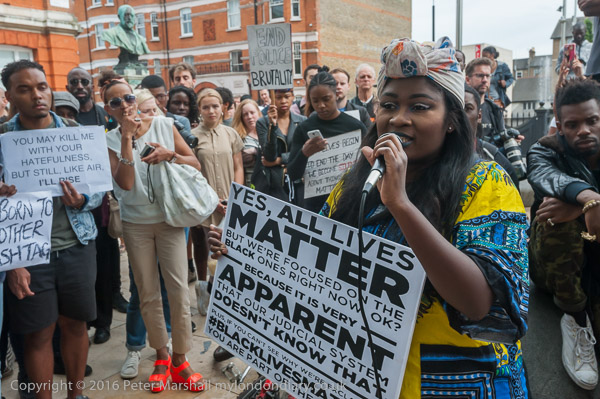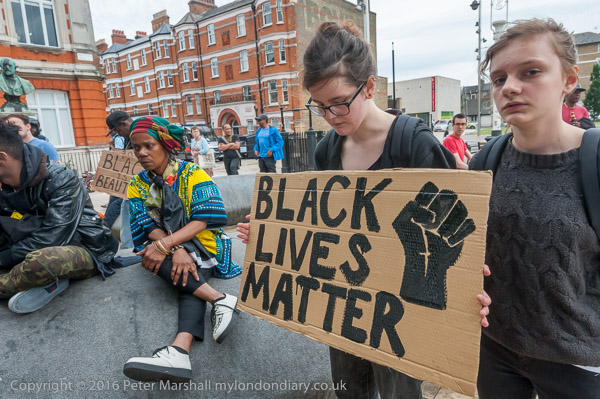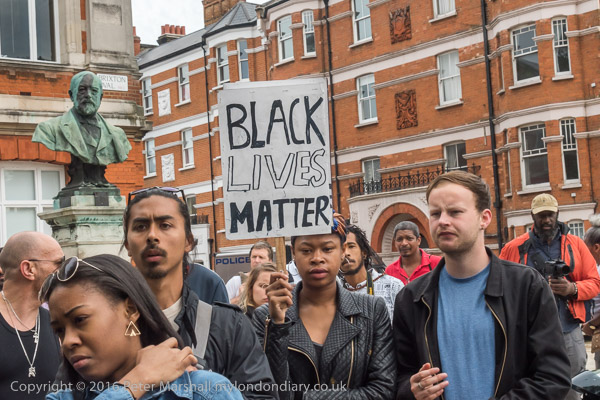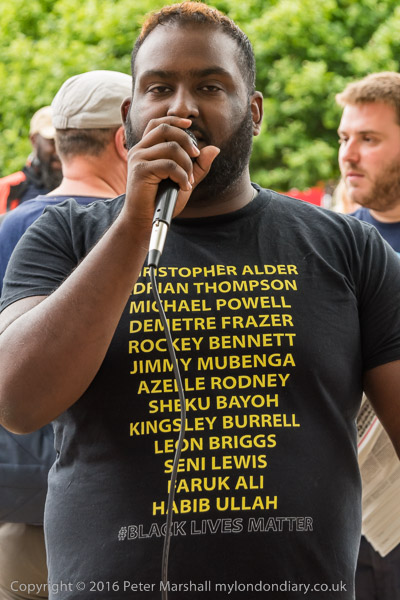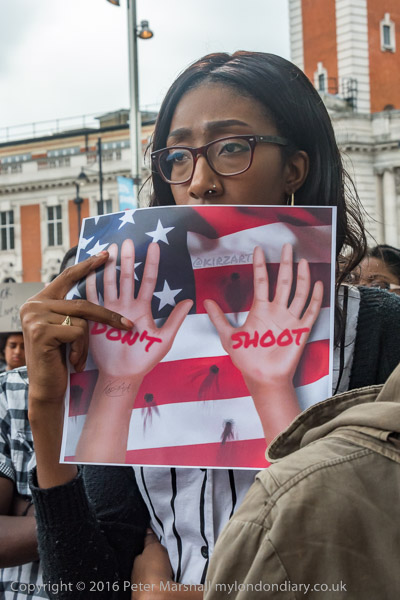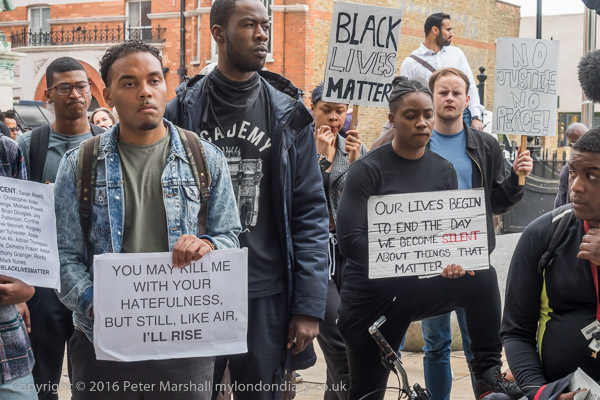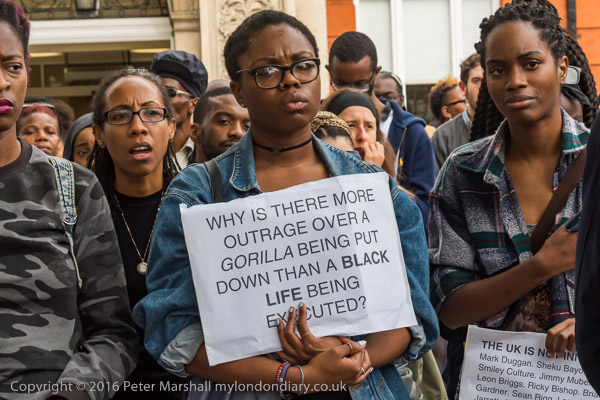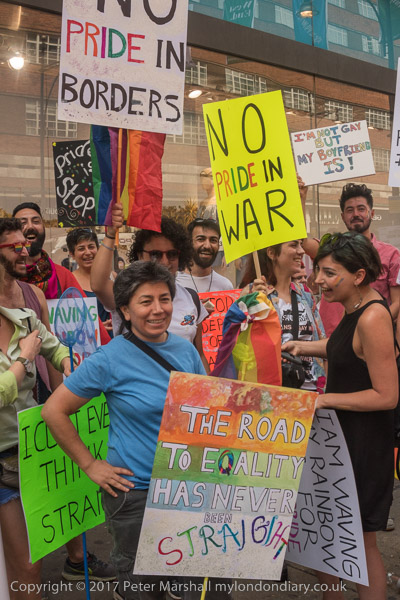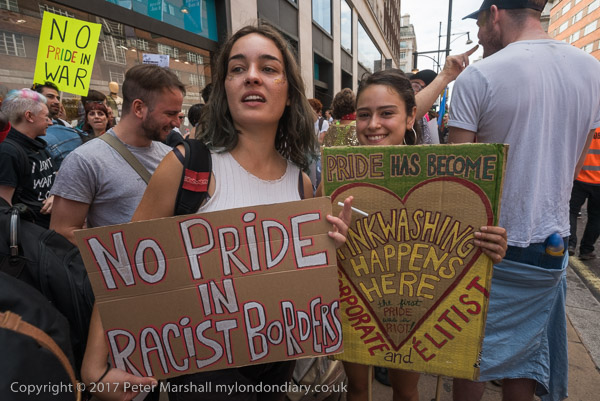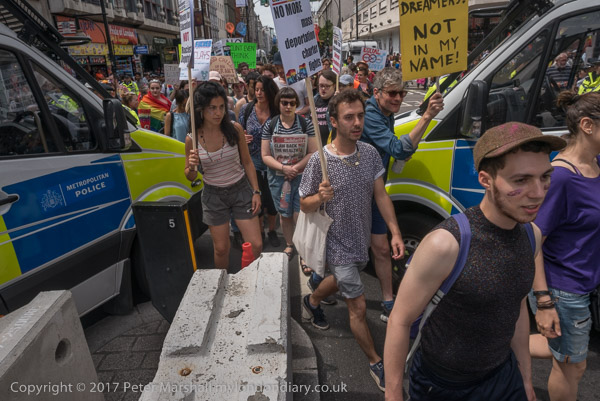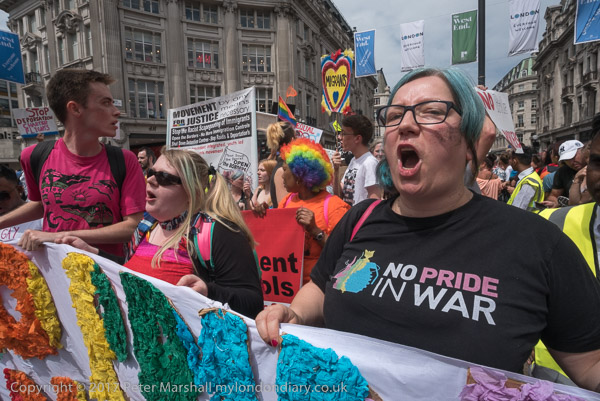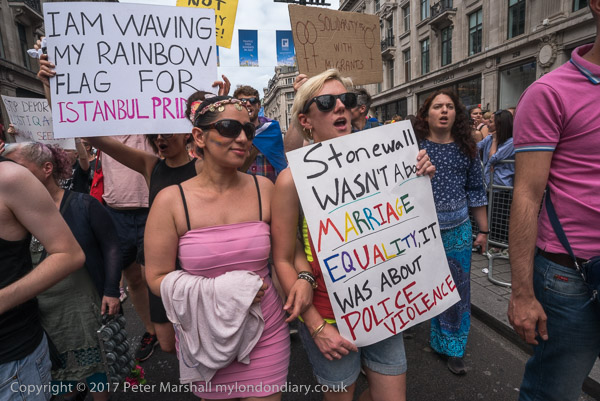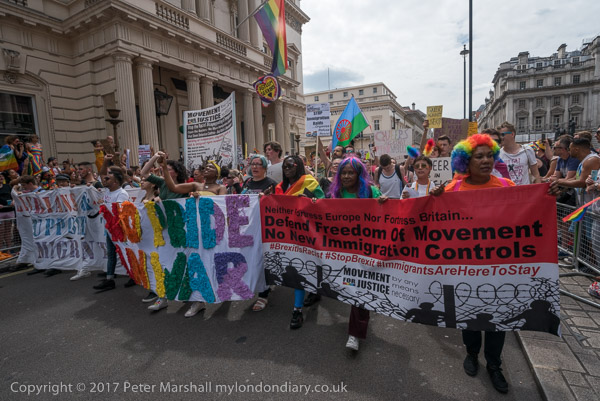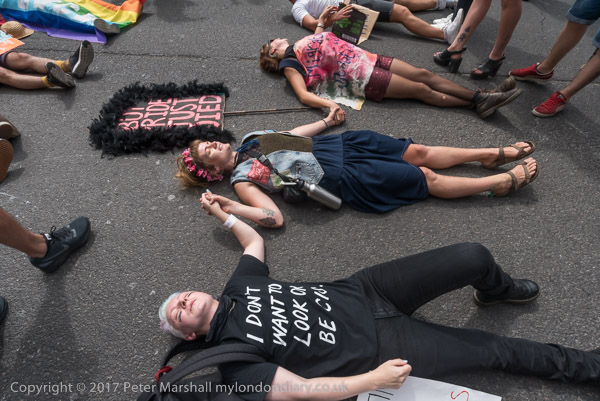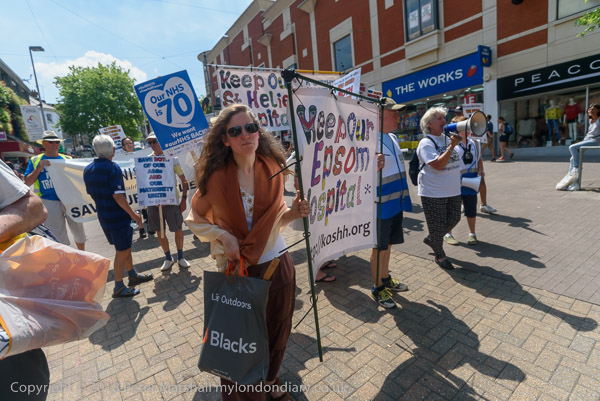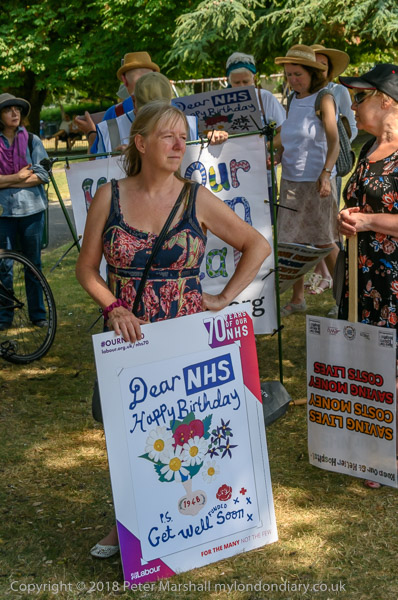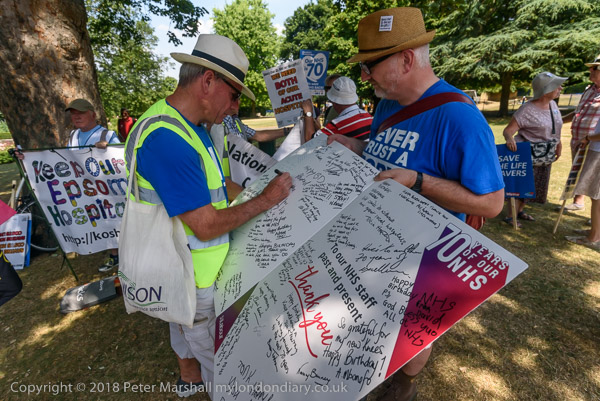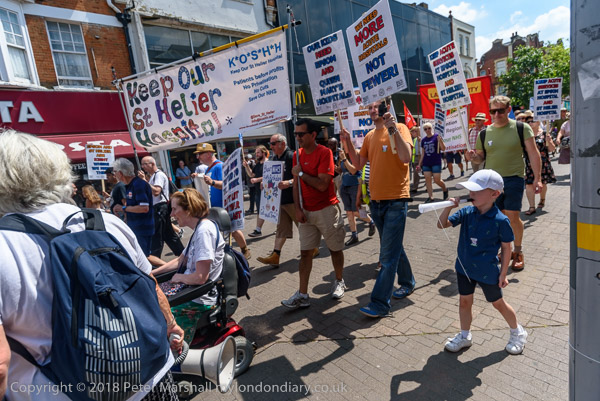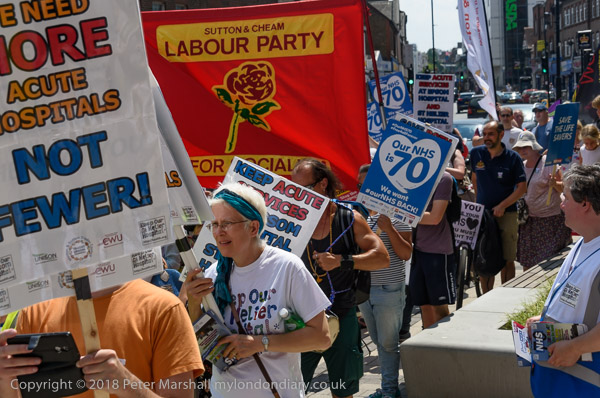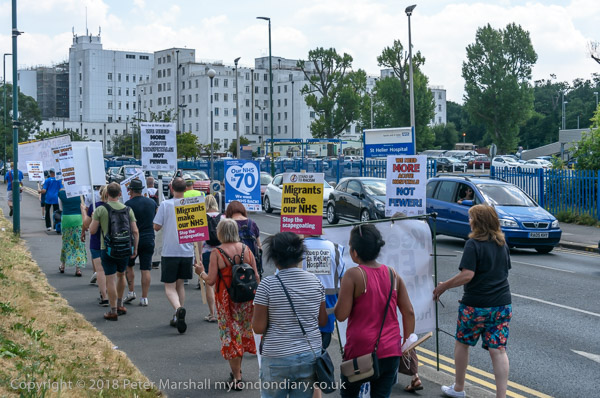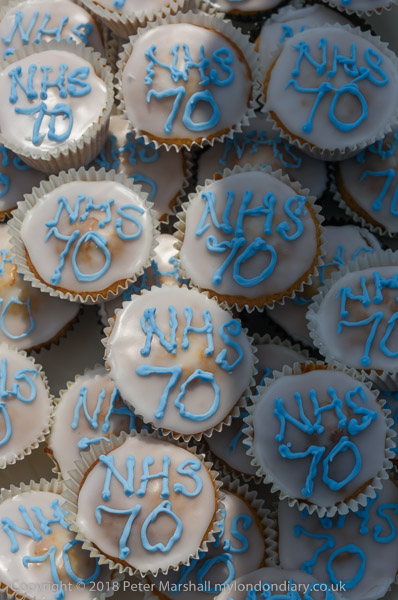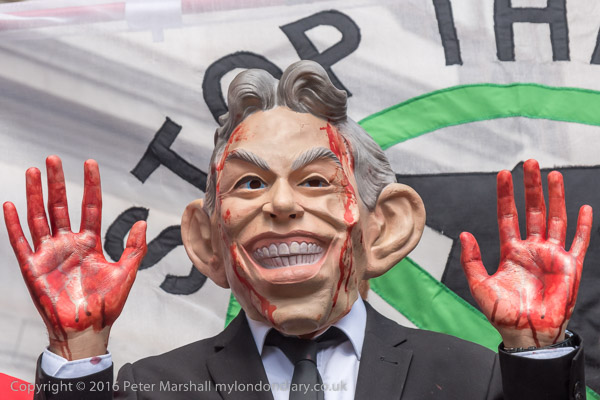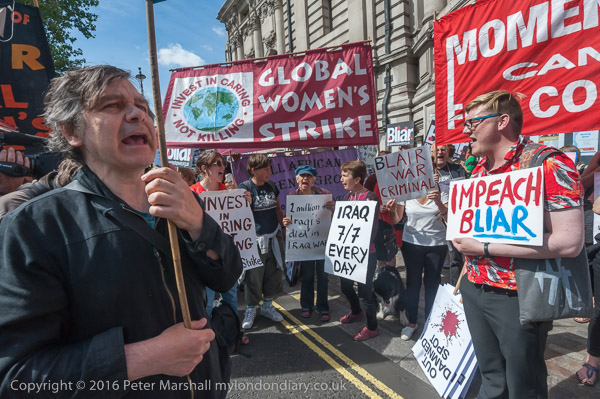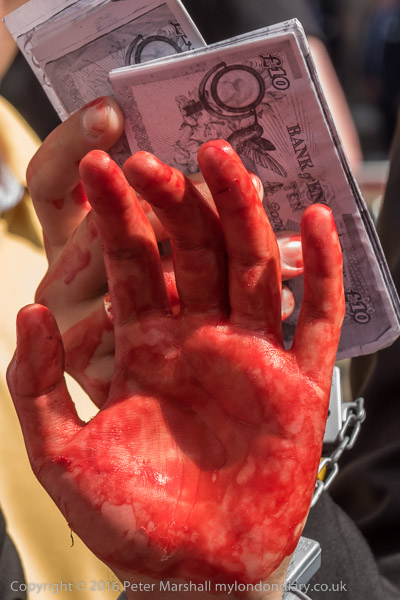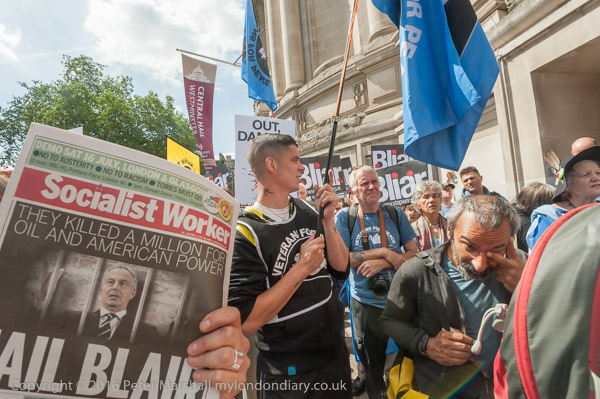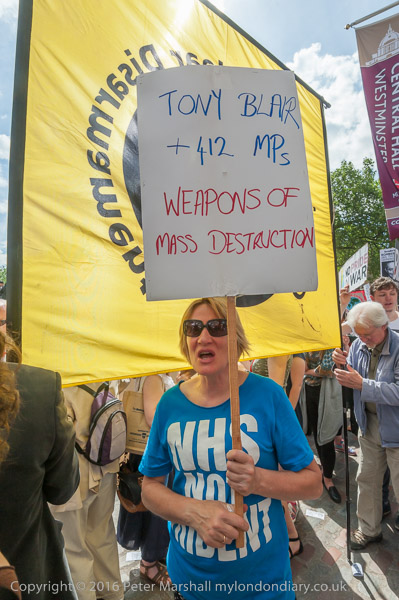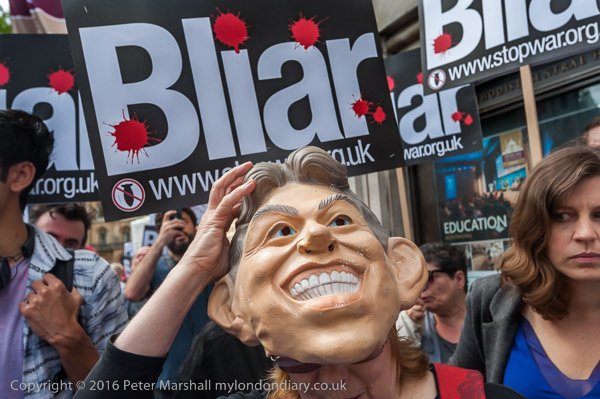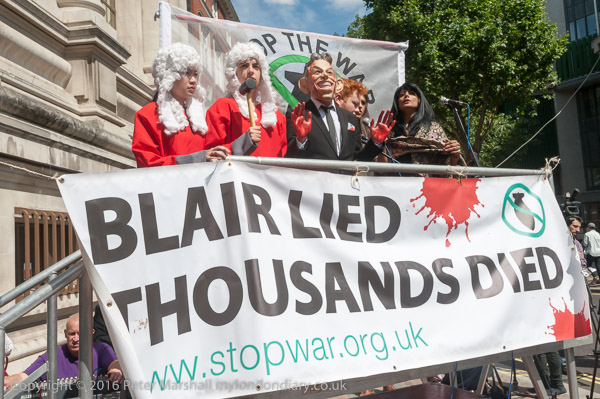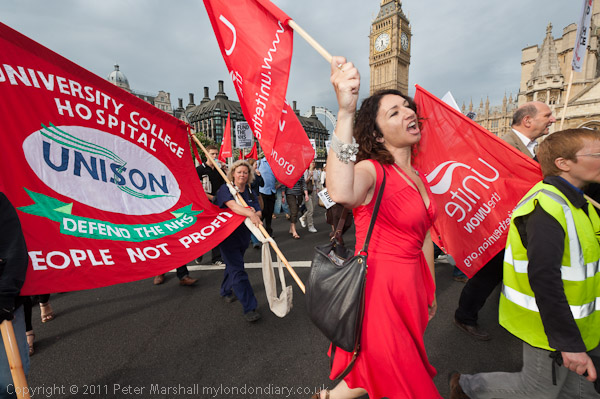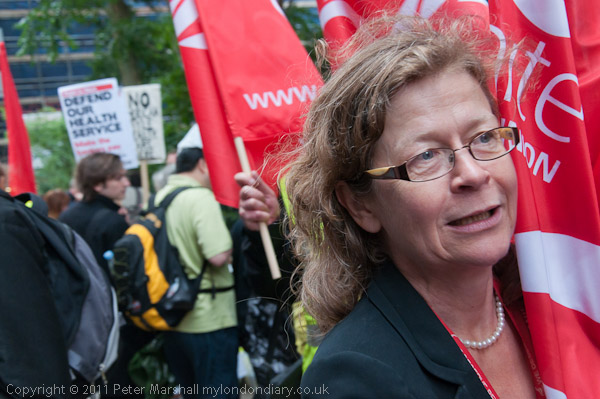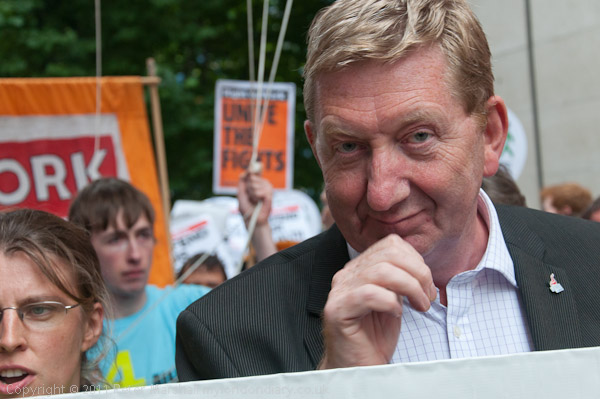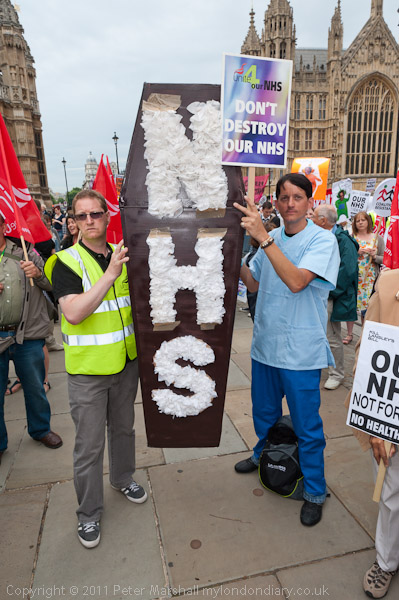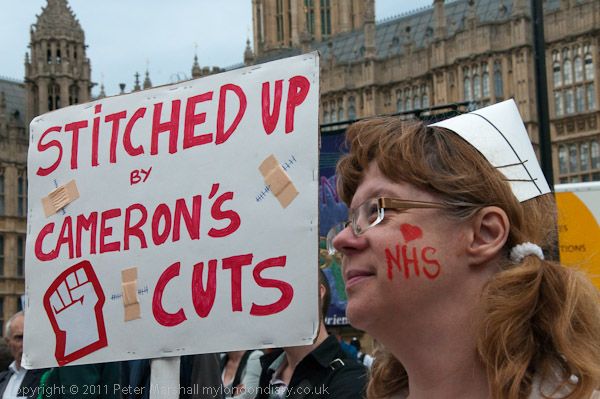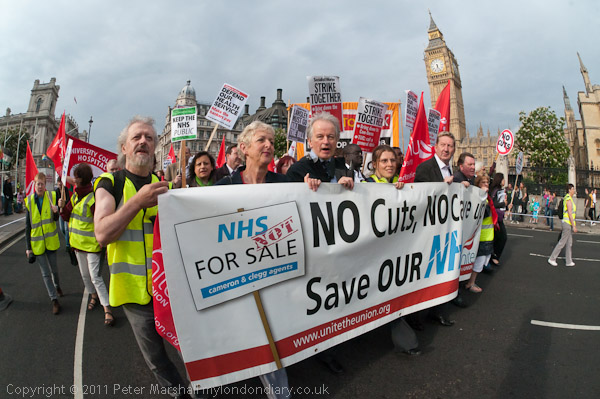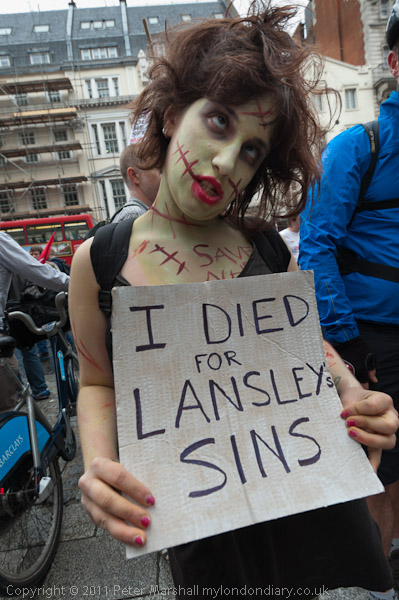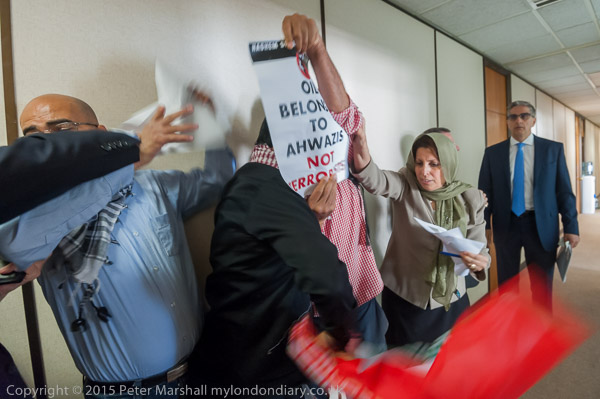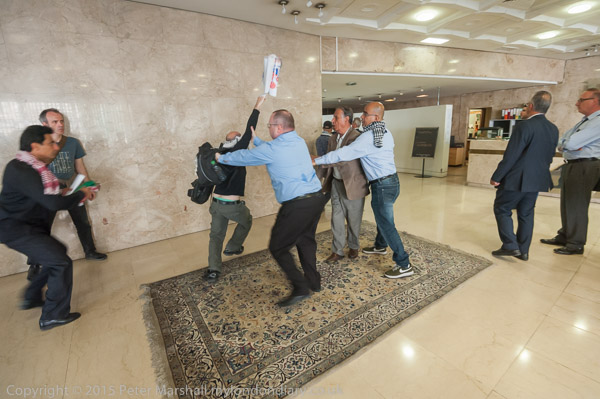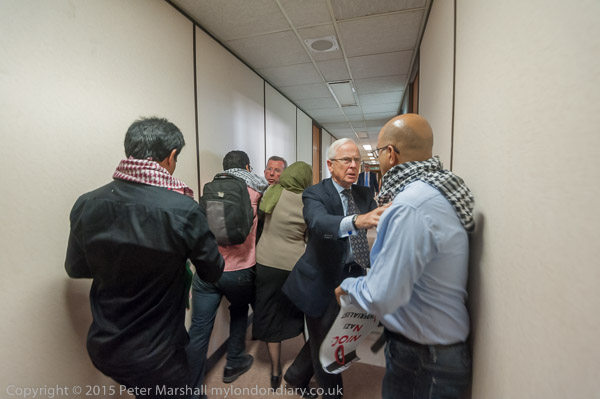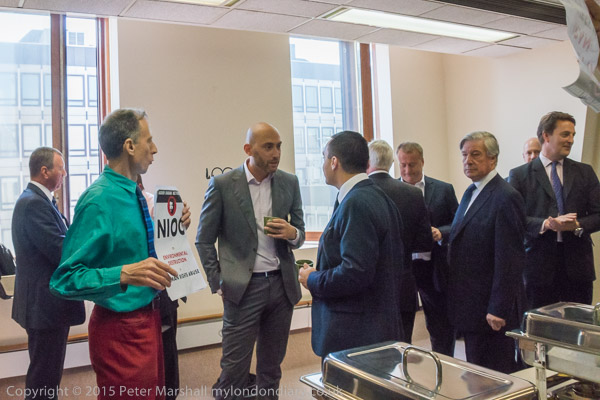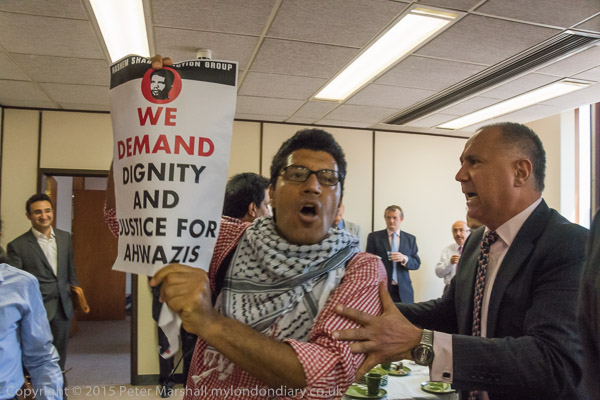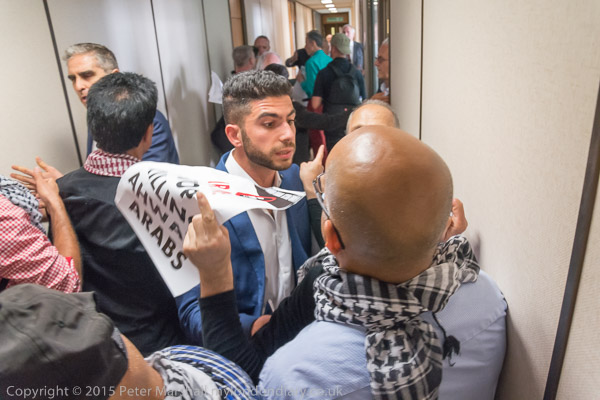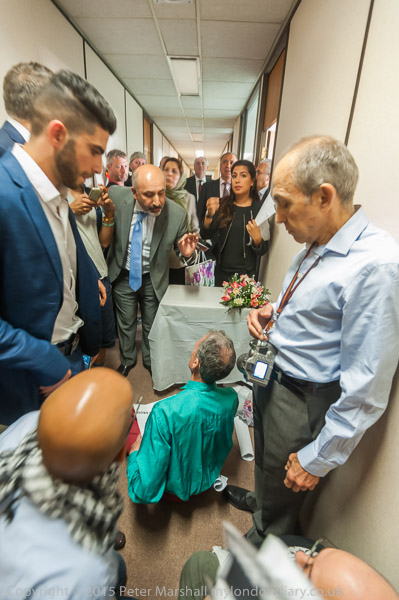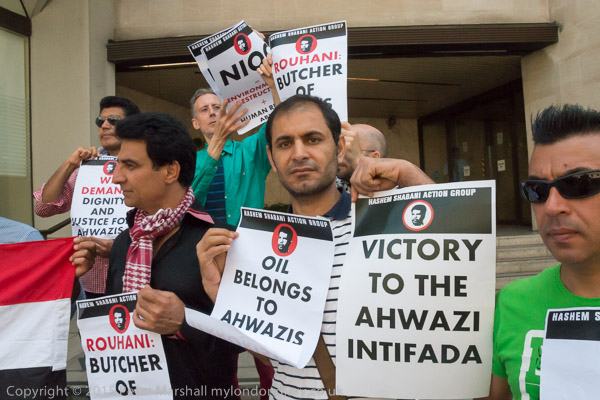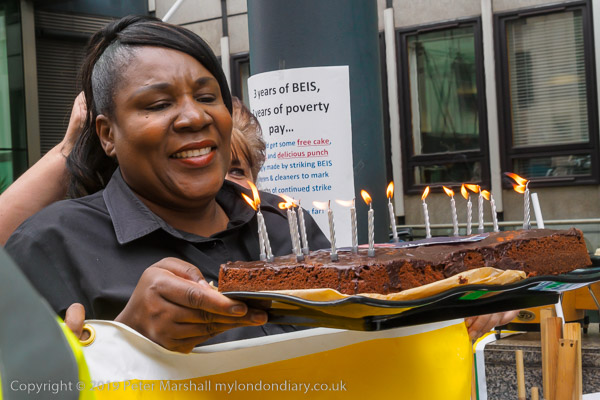
The cake came outside the Department for Business, Energy and Industrial Strategy (BEIS) where PCS members who work as cleaners and catering workers were beginning the first ever indefinite strike at a government ministry, demanding they be paid the London Living Wage, and get decent conditions of employment.
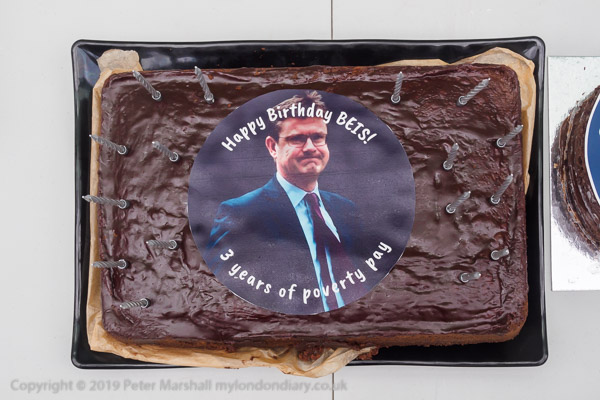
It was the third anniversary of the founding of the BEIS, and also the third anniversary of the campaign to get the workers there decent pay and to be employed directly by the BEIS, rather than outsourcing companies ISS and Aramark whose only concern is cutting costs to the bone by exploiting the workers so they can undercut competitors for the contracts and make profits at the workers’ expense.
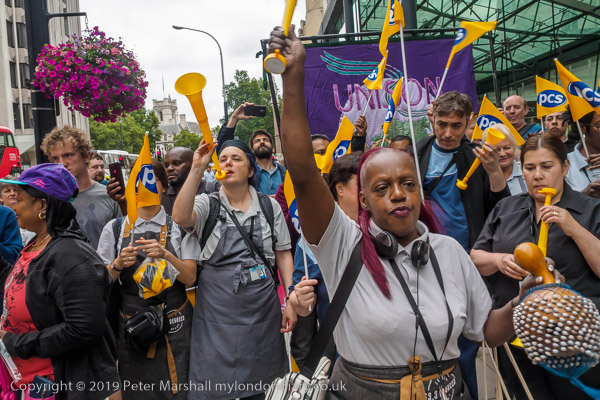
A crowd of around a hundred supporters was there to cheer the strikers when they came out of the BEIS to begin their strike and there were speeches from trade unionists including PCS General Secretary Mark Serwotka, RMT General Secretary Mick Cash, and UCU’s Jo Grady as well as then Shadow Chancellor John McDonnell MP and some of the BEIS workers. I did manage to get a piece of the cake before I had to leave for the Royal Courts of Justice.
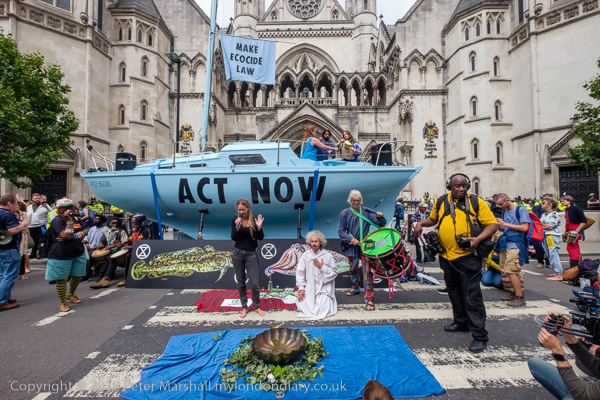
Extinction Rebellion had brought the yacht to to court to begin their ‘Summer Uprising’, another series of protests in five major cities against the criminal inaction by the government on climate and ecological collapse. The yacht was named Polly Higgins after the Scottish barrister who fought for years for an Ecocide Law and had died of cancer 3 months earlier, only 50.
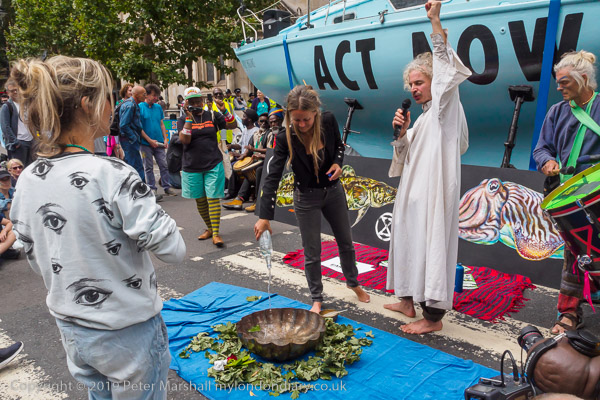
When I arrived some kind of new age ceremony was taking place with people bringing water from across the country to pour into a large bowl and a Druid celebrant in long white robes. It’s one of the kind of things that makes it hard for many to take XR seriously as a movement.
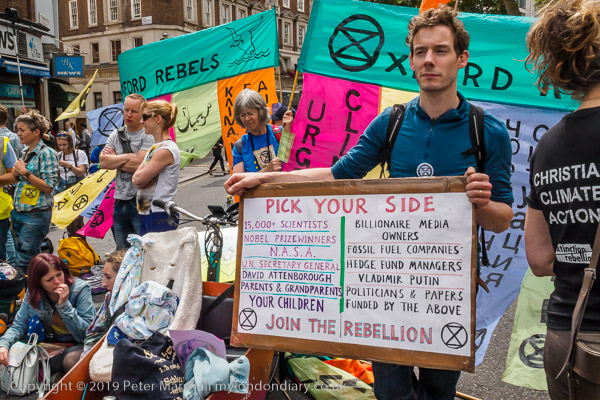
But of course it is serious and the crisis that we face is existential. An ecocide law would be a powerful way to restrain some of the worst excesses of companies that are driving us to extinction. There were some good speeches at the event, with some very clear thinking, but also a few which made me cringe a little.
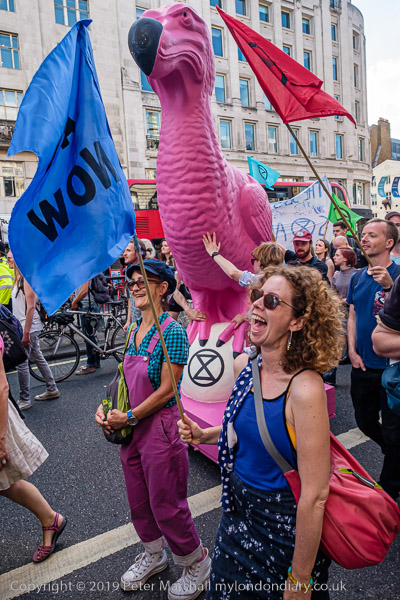
Eventually it was time to march, with the pink Dodo and the yacht, making our way across the river towards Waterloo where XR was to set up a camp on Waterloo Millenium Green.

There really is a climate and ecological emergency, with too many species going the way of the dodo, and we do need governments to tell the truth and make real and difficult actions to halt what seems an inevitable slide into irreversible heating which will make the world uninhabitable for many species, probably including our own. It’s time to end the kind of lip-service which has our government setting targets long into the future while ramping up disastrous policies like Heathrow expansion, road-building and coal mines.
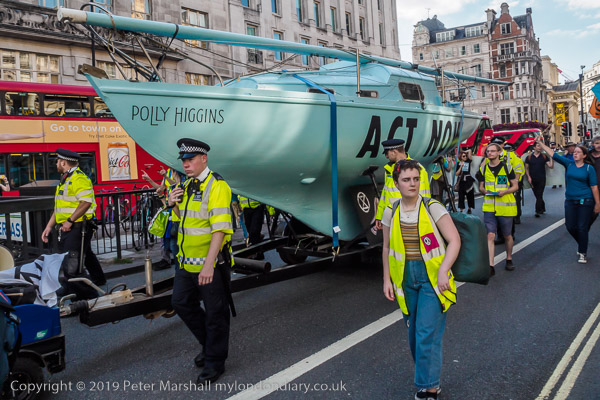
The yacht went with them at the back of the procession, which halted for some time to block Waterloo Bridge, remembering the many arrests there in the previous XR protests, before continuing. It was then stopped by police on Waterloo Rd, causing far more rush hour traffic chaos than necessary by completely blocking the Waterloo roundabout. Eventually they were allowed to continue and occupy the green space they were heading for, but by that time I had left and walked into Waterloo station to catch my train home.
XR Summer Uprising procession
XR call for Ecocide Law
BEIS workers begin indefinite strike
All photographs on this and my other sites, unless otherwise stated, are taken by and copyright of Peter Marshall, and are available for reproduction or can be bought as prints.
